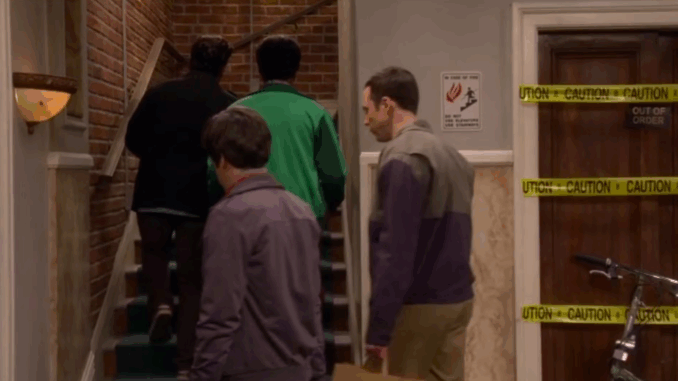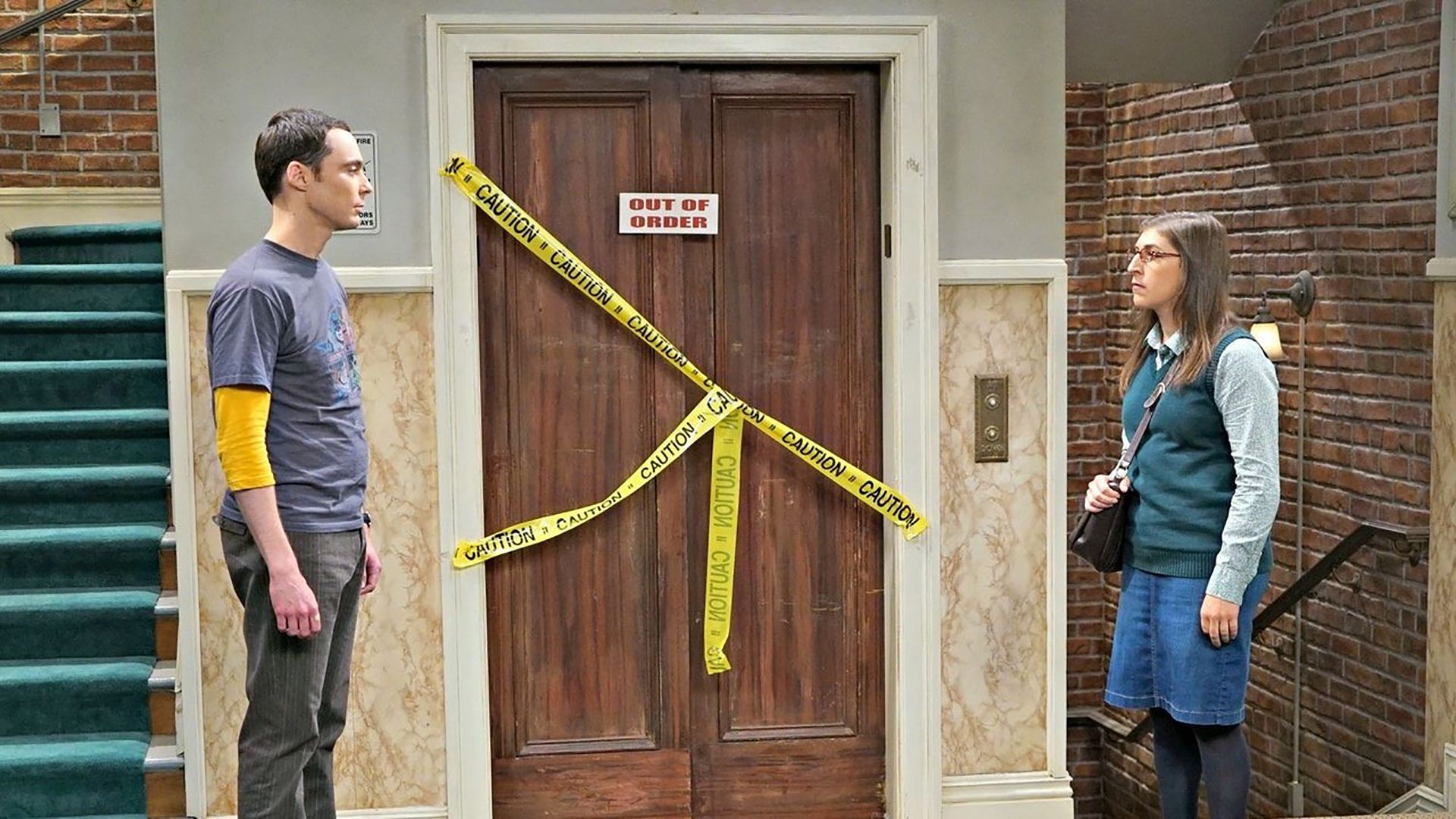
The Broken Elevator: A Comic Gag That Spanned Seasons
One of the most consistently recurring visual elements throughout all twelve seasons of The Big Bang Theory is the broken elevator. From the pilot to the finale, audiences watched the core characters—Sheldon, Leonard, Penny, Raj, and Howard—trudge up and down the stairs of their Pasadena apartment building. While it seemed like nothing more than a throwaway gag at first, the elevator came to symbolize something much deeper for both characters and viewers.
Comedy in Repetition
From a comedic perspective, the elevator is the perfect example of situational humor. The characters are often shown panting or bickering on the staircase, which makes room for both jokes and meaningful conversations. The elevator’s continued disrepair became a running joke, used so frequently that fans began wondering if it would ever be fixed.
But beyond the laughter, the elevator served as a storytelling device. Each climb represented an opportunity to highlight relationships, showcase character growth, and offer quiet moments of connection amid the chaos of their lives.
Symbolism of the Staircase

What if the elevator was more than a joke? In a way, the broken elevator became a metaphor for the slow but steady evolution of the characters. These are brilliant minds who solve cosmic equations and build robots, yet they must still climb three flights of stairs daily—just like everyone else.
The act of walking those stairs together, again and again, also served to ground the show. Despite their scientific genius and eccentricities, the characters remained tethered to the mundane rituals of life. Viewers could relate, laugh, and find comfort in the repetitive struggle.
A Surprise in the Finale
After twelve seasons, the elevator is finally repaired in the series finale. When Sheldon walks into it and it actually functions, fans were shocked—and emotional. It was a full-circle moment. The fixed elevator symbolized resolution, maturity, and the end of an era.
Sheldon, who had perhaps grown the most, steps inside this newly functioning mechanism as a metaphorical step forward in his own life. No longer stuck in cycles of rigidity and isolation, he begins to accept change, uncertainty, and even love.
More Than a Stairwell
The elevator may have been broken, but the storytelling never was. That simple shaft of space became a corridor of growth, humor, and transformation. It bore witness to heartbreaks, reconciliations, science debates, and hilarious misunderstandings.
The Big Bang Theory might be known for its witty dialogue and nerdy references, but it’s small elements like the broken elevator that truly showcase the brilliance behind the series. It was an ever-present reminder that even in a world of science, sometimes the most human experiences—like taking the stairs—are the ones that matter most.
The next time you rewatch the series and see Leonard puffing his way to the third floor or Sheldon stubbornly counting his steps, remember: the elevator was never just broken. It was waiting. For all of them to grow.
